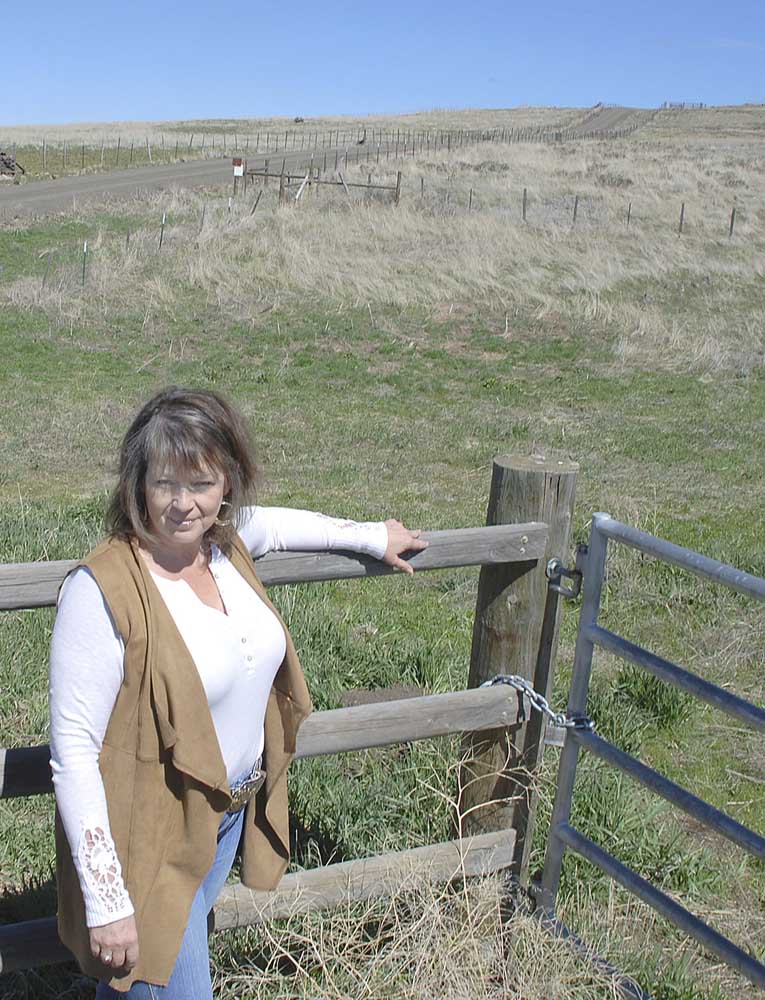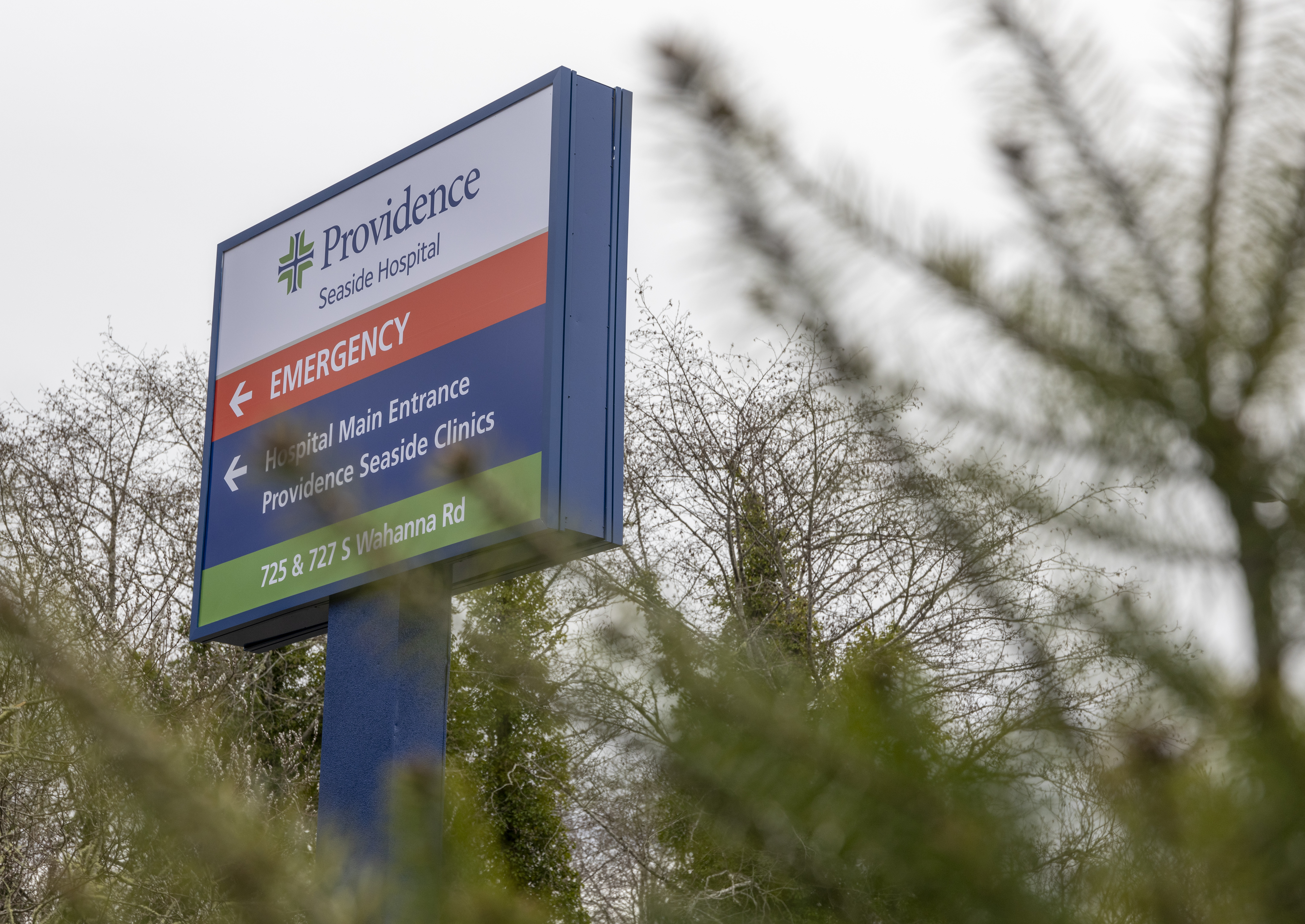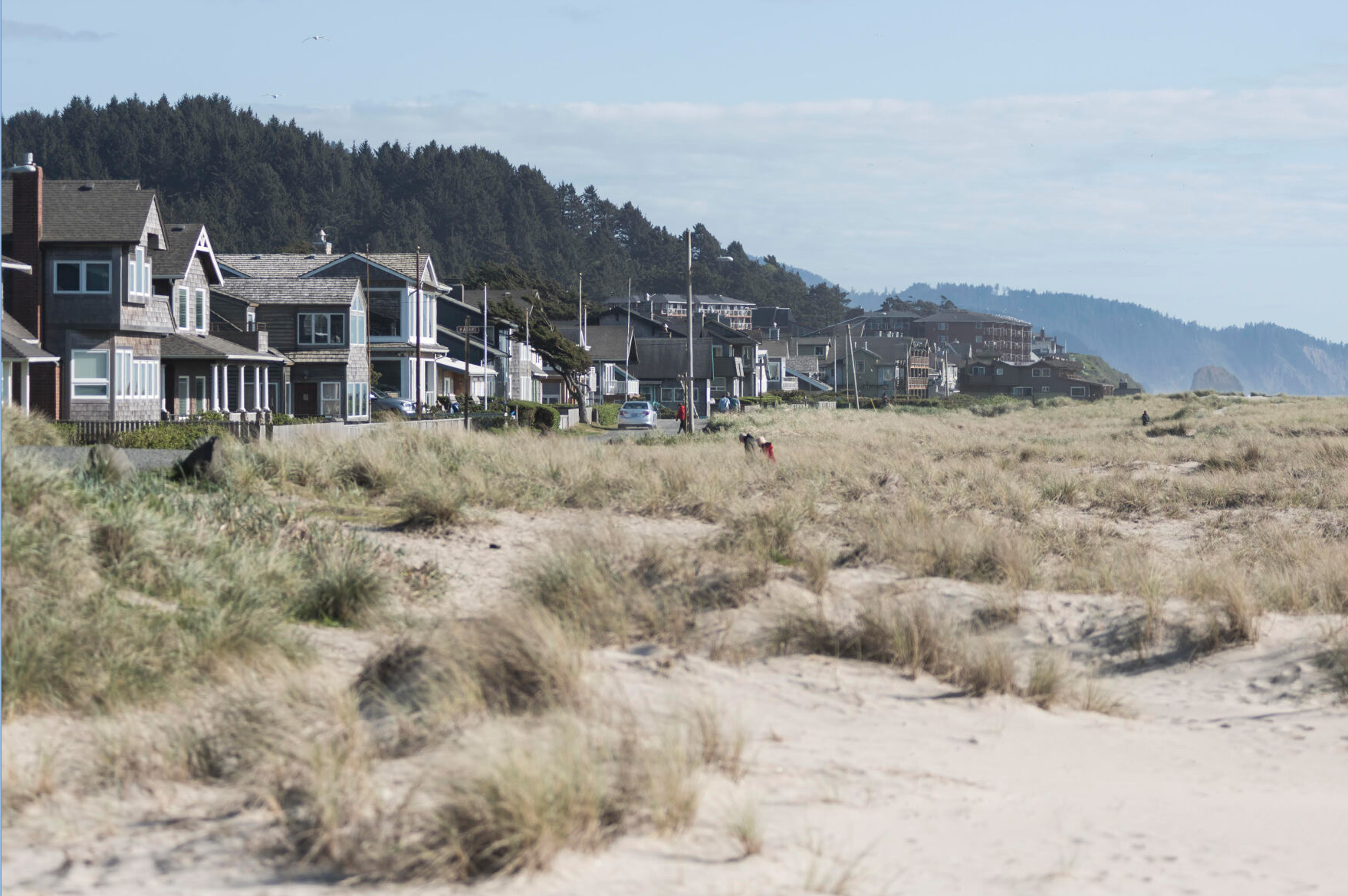For sale: When Oregon farm, ranch lands change hands
Published 8:00 pm Wednesday, May 17, 2017

- Paul Wahl/EO Media Group Diane Daggett was part of a cattle ranching family in Wallowa County and her son hoped to carry on the tradition. But a family member sold the property to someone from outside the area. Daggett said Oregonians should examine not only who buys farm and ranch land, but what happens with it afterward.
Diane Daggett remembers the conversation with the woman who had just purchased the Daggett family’s 440-acre cattle ranch in northeast Oregon’s Wallowa County, land that had been in the family for four generations.
Trending
The buyer said she had called her husband, who was aboard their yacht in the Cayman Islands, to share the news. “Honey,” the woman said she’d told him, “I just bought the most amazing birthday gift for you.”
And the land, sold by Daggett’s stepmother for what Daggett figures was three times what it could generate as a cattle ranch, slipped from the family’s grasp. Now it lies behind a locked gate.
Variations of that story are playing out across Oregon and other states as farm and ranch land changes hands, sometimes by thousands of acres at a time. Some buyers are fellow farmers who are expanding their operations under the mantra of “get big or get out.” But other buyers include investment firms, wind energy developers, conservation organizations, companies that fit the description of “Big Ag” and wealthy individuals looking to establish private hunting reserves or vacation retreats.
Trending
The impact is unclear at this point, but the primary worry is about ag land being taken out of production. Jim Johnson, the state’s Department of Agriculture’s land-use and water planning coordinator, said ag land conversion is a concern especially in areas with “amenity values.” Daggett’s scenic Wallowa County is an example, “Where the primary reason to live out there is to be there, and the secondary reason is to farm,” Johnson said.
Ag property purchased to be a recreational site, he said, inflates land values and makes it more expensive for farmers and ranchers to buy or rent.
New owners who aren’t interested in farming themselves might gain more revenue by enrolling land in the federal Conservation Reserve Program, in which they receive payments for taking it out of production, rather than leasing crop land to other farmers, said Walter Powell, a Condon wheat farmer. In that case, there’s a reduction to the farming infrastructure: the seed and fertilizer dealer, the equipment store, local employment and more, Powell said.
Jim Wood, a cattle rancher near Post, in central Oregon, said the biggest threat to high-desert cattle ranching is the fragmentation of grazing ground. Ranching in his area requires big acreage to be ecologically and economically sustainable, and segmentation or development for other uses cuts into that and increases land prices, Wood said.
“If you overgraze, this landscape is quick to be unforgiving, and you’re going to be out of business,” he said.
Oregon’s land-use laws — adopted to preserve farm and forest land from urban sprawl — generally preclude rapid, wholesale development of agricultural land.
Statewide, counties approved 473 houses on farmland in 2014 and 522 in 2015, the most current figures provided by the Oregon Department of Land Conservation and Development.
Daggett acknowledges an argument could be made that the “highest and best use” of her family land could be as a “view property.”
But ownership changes can ripple deep in rural communities.
“This is very personal for me,” said Daggett, who was Wallowa County’s planning director in the late 1990s and, ironically, now sells real estate. She said her son had hoped to run cattle on the family land, but now leases land from others. “Like a sharecropper,” Daggett said.
The giddy buyer who called her husband in the Caymans has yet to build a dream home on the property. It appears someone is leasing the pastures.
“There’s an impact to the historic social fabric, there’s this disruption socially,” Daggett said.
“It’s more than a question of who’s buying,” she said. “It’s who’s buying, and then what?”
Some of the listings carried by Whitney Land Co. are breathtaking. The Pendleton-based real estate company specializes in farm and ranch properties, especially big ones.
Until the owner took it off the market this spring, one of Whitney Land’s offerings was called the Kinzua Ranch in Wheeler County: More than 39,000 acres with a $28 million asking price.
The property included much of what used to be the timber holdings and former community of Kinzua, a company mill town that ceased operation in 1978. Timber industry reps have expressed interest, but the property hasn’t sold yet.
Whitney Land Co. has other big properties to sell, including the Maurer Ranch at Clarno, along the John Day River, which is listed for $19.7 million. It includes more than 29,000 deeded acres plus 18,000 acres of Bureau of Land Management and U.S. Forest Service grazing leases, which hold significant value.
The property has been in the same family for more than 90 years, has been used for cattle, grain and hay production, and includes nine fenced pastures and eight miles of river frontage. The owners may break it into smaller parcels and sell it that way, said Todd Longgood, a Whitney broker.
While cautious about characterizing possible clients, Longgood said Oregon farms and ranches catch the attention of what he called “corporate ag” or “intense ag” buyers. Some potential buyers are looking for “longterm holds,” figuring the land will increase in value and they can resell later; others pursue crop land “knowing there will always be a market for food.” Some buyers bring with them the resources to develop or expand irrigation systems, critical for high-value crops.
“In the corporate ag world, there is more money available for ag land than there is supply,” he said.
At Portland State University, land-use and urban planning professor Megan Horst is assembling ground-breaking data on Oregon farm and ranch sales. Working with a graduate research assistant, she asked county clerks for information on sales from 2010 to the end of 2015 of land zoned exclusive farm use.
Horst is compiling land sales in the eight agricultural regions defined by the Oregon Department of Agriculture. In Northeast Oregon, 360,265 acres of exclusive farm use land sold during the 2010-15 time period. In the Willamette Valley, 169,572 acres sold, and along the coast, 13,397 acres sold.
Oregon has slightly more than 17 million acres of farmland. Over the six-year study period, the acreage sold in the three ag regions analyzed so far amounts to only 3.2 percent of the state’s total farmland.
In some cases, however, significant money was involved. According to Horst’s figures, the median sales price per acre of Willamette Valley farm use land was $21,909. On the coast, it was $10,299, while in Northeast Oregon the median price per acre dipped to $2,451. The values include permanent crops such as orchards and vineyards and other infrastructure.
Horst said the sales figures compiled so far raise issues Oregonians ought to be discussing. Among them: Who has access to agricultural land, and what happens if food production is concentrated in the hands of the few who can afford to buy large swaths of land?
The research follows a study Horst co-authored with five others: “The Future of Oregon’s Agricultural Land.”
The report, produced by Oregon State University, PSU and Rogue Farm Corps, an advocacy group, noted that the average age of Oregon farmers is now 60.
“As older farmers retire over the next two decades, over 10 million acres, or 64 percent of Oregon’s agricultural land, will pass to new owners. How that land changes hands, who acquires it, and what they do with the land will impact Oregon for generations,” the authors wrote.
In Portland, Sue Doroff nods in understanding at some of the concerns expressed over Oregon farm and ranch land sales. People “go to their fearful place” pretty quickly when they hear of big acreages listed for big money, she said.
Doroff is a co-founder and president of Western Rivers Conservancy, which has had a very public role in significant farmland transitions.
In 2008, Western Rivers bought the 8,000-acre Murtha Ranch, along the John Day River 25 miles north of Condon, for $7.9 million. The purchase included an 8,000-acre BLM grazing lease. The organization then began selling the ranch in stages to the Oregon Parks and Recreation Department for the same price, completing the process in 2011.
Cottonwood Canyon State Park, one of the largest in the state, opened two years later. The ranch’s barn, corrals and other infrastructure are incorporated into the park. Hunting and fishing are allowed in the park, and a grazing management plan is in the works.
The sale cost Gilliam County some property tax revenue as the land went from private ranch to tax-exempt public park. County Assessor Chet Wilkins said the property was mostly low-value range ground that was specially assessed. The approximate total yearly tax loss to Gilliam County is $2,080, Wilkins said in an email.
In 2014, Western Rivers again bought John Day River property, this time the 14,148-acre Rattray Ranch, and its 10,530-acre BLM grazing lease.
Western Rivers is primarily concerned with improving water quality and river habitat for salmon and steelhead runs, but Doroff said there are “lots of opportunities” for compatible conservation work, crops and livestock grazing.
“When we take sensitive lands and make them better, it takes some of the stress off the ecosystem,” she said. The Rattray Ranch purchase will provide public river access, hopefully reducing trespassing problems that bothered other landowners. That and the park opening also bring more economic activity to nearby Condon, as visitors choose places to stay and eat.
Even though there is some “parsing of the landscape” through sales, Doroff said big buyers are likely to continue traditional uses such as grazing cattle and growing wheat.
“Who is going to spend that much and not generate some revenue from it?” she asked. “The adjustments are smaller than the fear.”









